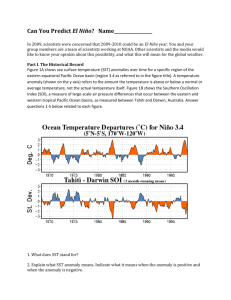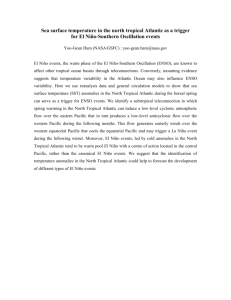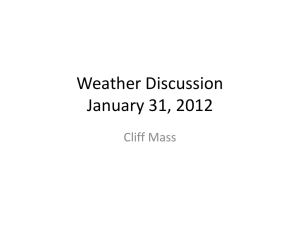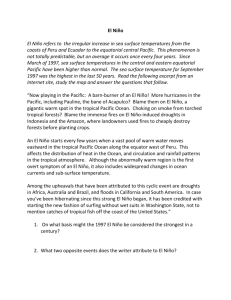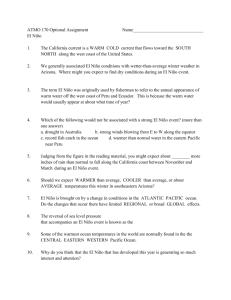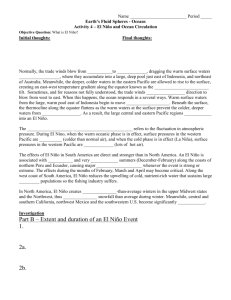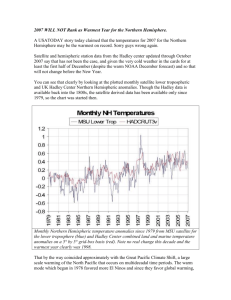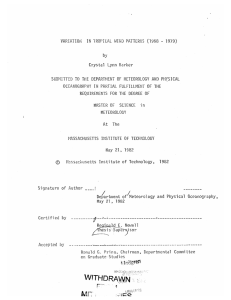Mid-late Holocene changes in the El Niño Southern Oscillation
advertisement
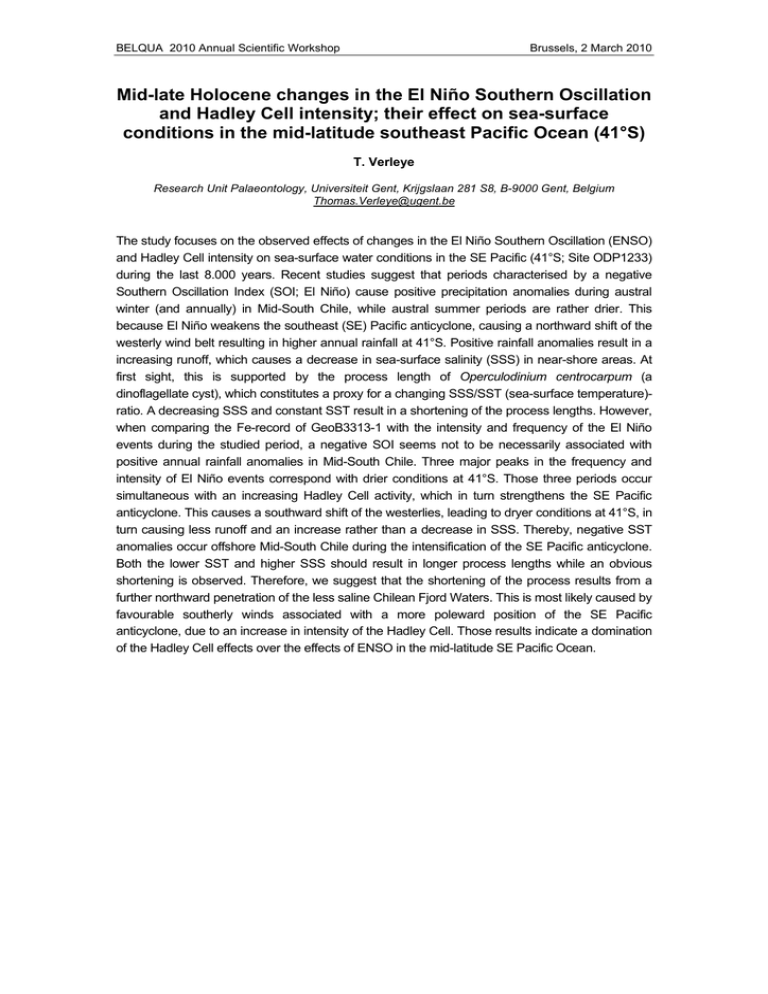
BELQUA 2010 Annual Scientific Workshop Brussels, 2 March 2010 Mid-late Holocene changes in the El Niño Southern Oscillation and Hadley Cell intensity; their effect on sea-surface conditions in the mid-latitude southeast Pacific Ocean (41°S) T. Verleye Research Unit Palaeontology, Universiteit Gent, Krijgslaan 281 S8, B-9000 Gent, Belgium Thomas.Verleye@ugent.be The study focuses on the observed effects of changes in the El Niño Southern Oscillation (ENSO) and Hadley Cell intensity on sea-surface water conditions in the SE Pacific (41°S; Site ODP1233) during the last 8.000 years. Recent studies suggest that periods characterised by a negative Southern Oscillation Index (SOI; El Niño) cause positive precipitation anomalies during austral winter (and annually) in Mid-South Chile, while austral summer periods are rather drier. This because El Niño weakens the southeast (SE) Pacific anticyclone, causing a northward shift of the westerly wind belt resulting in higher annual rainfall at 41°S. Positive rainfall anomalies result in a increasing runoff, which causes a decrease in sea-surface salinity (SSS) in near-shore areas. At first sight, this is supported by the process length of Operculodinium centrocarpum (a dinoflagellate cyst), which constitutes a proxy for a changing SSS/SST (sea-surface temperature)ratio. A decreasing SSS and constant SST result in a shortening of the process lengths. However, when comparing the Fe-record of GeoB3313-1 with the intensity and frequency of the El Niño events during the studied period, a negative SOI seems not to be necessarily associated with positive annual rainfall anomalies in Mid-South Chile. Three major peaks in the frequency and intensity of El Niño events correspond with drier conditions at 41°S. Those three periods occur simultaneous with an increasing Hadley Cell activity, which in turn strengthens the SE Pacific anticyclone. This causes a southward shift of the westerlies, leading to dryer conditions at 41°S, in turn causing less runoff and an increase rather than a decrease in SSS. Thereby, negative SST anomalies occur offshore Mid-South Chile during the intensification of the SE Pacific anticyclone. Both the lower SST and higher SSS should result in longer process lengths while an obvious shortening is observed. Therefore, we suggest that the shortening of the process results from a further northward penetration of the less saline Chilean Fjord Waters. This is most likely caused by favourable southerly winds associated with a more poleward position of the SE Pacific anticyclone, due to an increase in intensity of the Hadley Cell. Those results indicate a domination of the Hadley Cell effects over the effects of ENSO in the mid-latitude SE Pacific Ocean.
